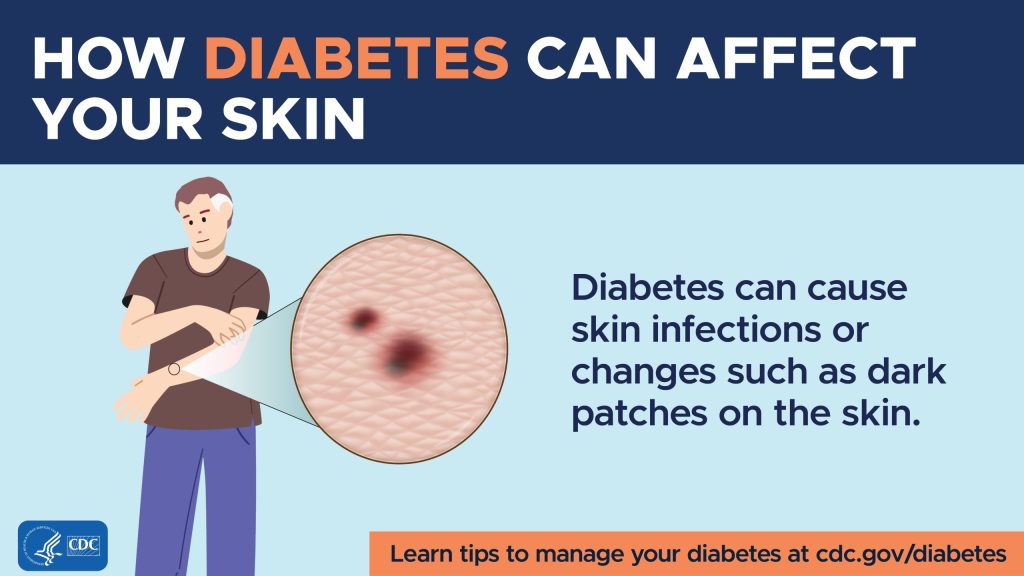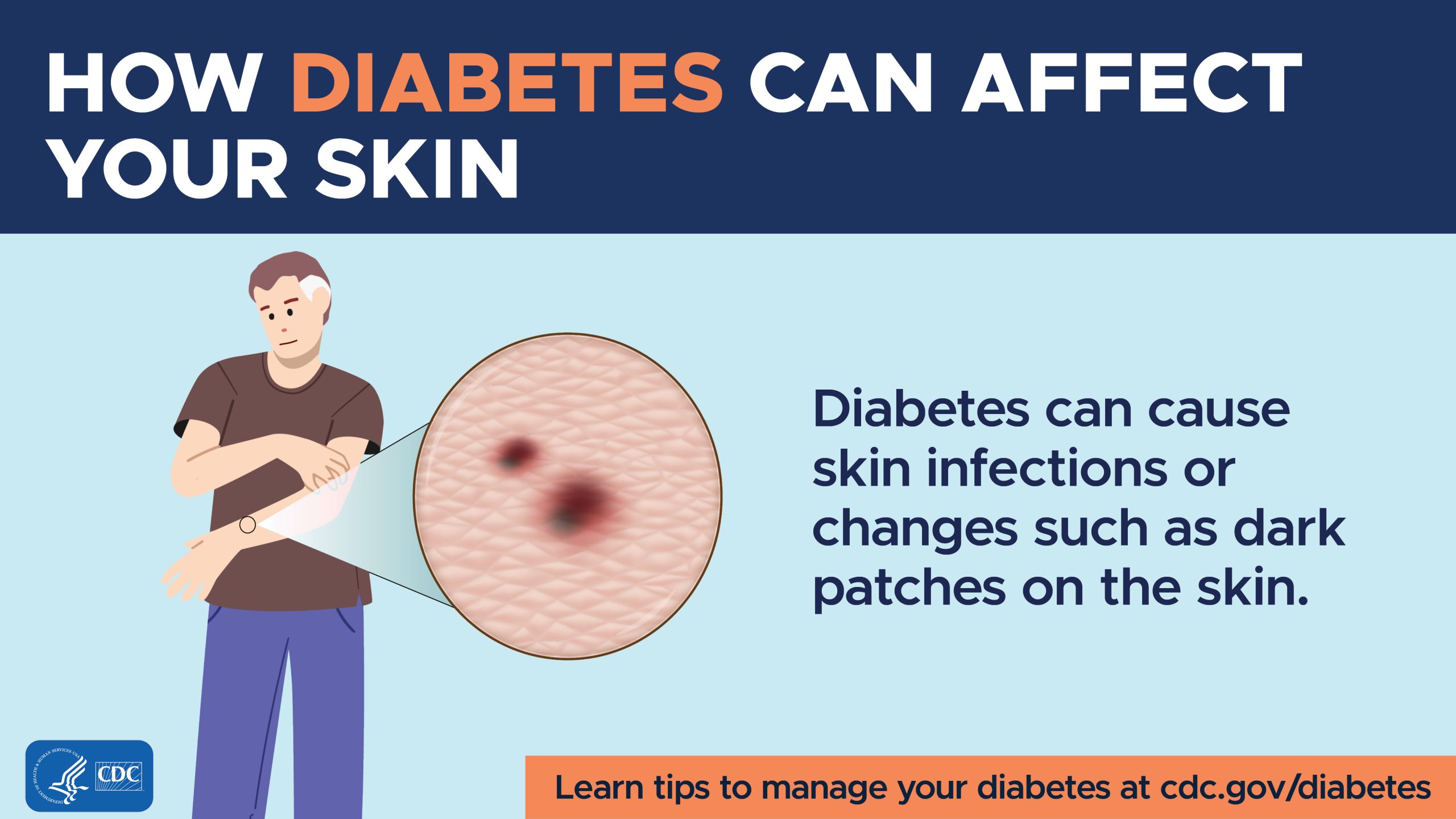If you or someone you care about has diabetes, you’ve probably noticed unusual skin changes—dryness, slow-healing sores, or stubborn rashes. These aren’t just cosmetic concerns; they can signal serious underlying issues. Understanding the diabetes with skin complications ICD-10 coding system is essential for both accurate medical documentation and effective treatment. In this guide, we’ll break down everything you need to know—from diagnosis to daily care—with clarity and compassion.
What Is the ICD-10 Code for Diabetes With Skin Complications?
The ICD-10 code for diabetes with skin complications falls under the E08–E13 range, which covers all diabetes mellitus types. Specifically, skin-related issues are coded using E11.620 for Type 2 diabetes mellitus with skin ulcer or E10.620 for Type 1 diabetes with skin ulcer.
However, not all skin problems in diabetes are ulcers. The ICD-10 system allows for more precise coding based on the type of skin condition:
| Diabetic foot ulcer | E11.621 (Type 2), E10.621 (Type 1) |
| Skin ulcer, unspecified site | E11.620 / E10.620 |
| Bacterial skin infection (e.g., cellulitis) | L03.90 + E11.69 (Type 2) |
| Diabetic dermopathy | E11.620 (often used as default) |
💡 Pro Tip: Always pair the diabetes code (E08–E13) with a secondary code for the specific skin condition (e.g., L98.4 for chronic skin ulcer) when documentation supports it. This improves billing accuracy and clinical clarity.
According to the American Diabetes Association (ADA), up to 79% of people with diabetes will experience a skin disorder in their lifetime—many of which go undiagnosed or mismanaged due to coding errors or lack of awareness.
Why Do People With Diabetes Get Skin Complications?
High blood sugar levels over time damage blood vessels and nerves, reducing circulation and immune response—especially in the skin. This creates a perfect storm for complications:
- Poor wound healing: Glucose impairs collagen production and white blood cell function.
- Dry, cracked skin: Neuropathy reduces sweating, leading to fissures that invite infection.
- Fungal & bacterial overgrowth: Yeast (like Candida) thrives in high-glucose environments.
A 2022 study in Diabetes Care found that patients with HbA1c >8% were 3.5 times more likely to develop skin ulcers than those with controlled glucose (<7%).

Common Skin Conditions Linked to Diabetes
Not all rashes are created equal. Here are the most frequent skin issues seen in diabetic patients:
- Diabetic Dermopathy
- Brown, scaly patches on shins
- Harmless but common (affects ~50% of diabetics)
- No treatment needed, but signals long-term glucose exposure
- Necrobiosis Lipoidica Diabeticorum (NLD)
- Shiny, red-yellow plaques that may ulcerate
- More serious; requires dermatologist care
- Seen in ~0.3% of diabetics, mostly women
- Acanthosis Nigricans
- Velvety dark patches on neck, armpits
- Often indicates insulin resistance
- May improve with weight loss or metformin
- Bacterial Infections
- Boils, styes, carbuncles
- Caused by Staphylococcus
- Require antibiotics and glucose control
- Fungal Infections
- Itchy red rashes in folds (groin, under breasts)
- Common culprits: Candida, Tinea
- Treated with antifungals + blood sugar management
For more on skin manifestations, see the Wikipedia page on diabetic dermopathy , which summarizes clinical features and epidemiology.
How to Properly Code “Diabetes With Skin Complications” in ICD-10
Accurate coding ensures proper reimbursement and continuity of care. Follow these 5 steps:
- Identify diabetes type:
- E08: Diabetes due to underlying condition
- E09: Drug- or chemical-induced
- E10: Type 1
- E11: Type 2
- E13: Other specified types
- Determine the skin complication:
Is it an ulcer? Infection? Dermopathy? Use clinical notes. - Assign the 7th character (if applicable):
For ulcers, use codes like E11.621 (foot ulcer) or E11.620 (other skin ulcer). - Add a secondary code if needed:
Example:- Primary: E11.620 (Type 2 diabetes with skin ulcer)
- Secondary: L97.529 (non-healing ulcer of left foot)
- Avoid “unspecified” codes unless necessary:
Payers increasingly reject claims with vague codes like E11.69 (“with other specified complication”).
⚠️ Warning: Using E11.620 for all skin issues—even non-ulcer conditions—can trigger audit flags. Always match the code to the documented diagnosis.
Daily Skin Care Tips for People With Diabetes
Prevention is your best defense. Follow this evidence-based routine:
- Check your skin daily
Use a mirror to inspect feet, between toes, and pressure points. Look for redness, blisters, or cuts. - Moisturize (but not between toes)
Apply fragrance-free lotion like CeraVe or Eucerin after bathing. Avoid toe webbing—it traps moisture and breeds fungus. - Wash with lukewarm water (32–38°C / 90–100°F)
Hot water strips natural oils. Limit showers to 10 minutes. - Trim nails straight across
File sharp edges to prevent ingrown toenails. - Wear breathable fabrics
Choose cotton or moisture-wicking socks. Change them if damp. - Control blood sugar
Aim for fasting glucose 80–130 mg/dL and HbA1c <7% (per ADA guidelines).
A 2021 trial in The Journal of Clinical Endocrinology & Metabolism showed that patients who followed a structured skin care plan reduced ulcer risk by 62% over 12 months.
FAQ: Diabetes With Skin Complications ICD-10
Q1: Is E11.620 the correct code for diabetic rash?
A: Not always. E11.620 specifically refers to skin ulcers. For rashes like diabetic dermopathy or fungal infections, use E11.69 (other specified complication) plus a skin-specific code (e.g., L83.0 for acanthosis nigricans).
Q2: Can I use E11.620 for a foot blister?
A: Only if the blister has broken down into an open ulcer. Intact blisters are coded as L76.8 (other intraoperative and postprocedural complications of skin).
Q3: Do I need two codes for diabetes and cellulitis?
A: Yes. Example: E11.69 (Type 2 diabetes with other complication) + L03.90 (cellulitis, unspecified).
Q4: What’s the difference between E11.620 and E11.621?
A: E11.620 = skin ulcer (any site except foot); E11.621 = diabetic foot ulcer. Foot ulcers have higher amputation risk and require specialized coding.
Q5: Are skin complications covered by insurance?
A: Yes—if coded correctly. Medicare and most private insurers cover wound care, antifungals, and dermatology visits when linked to a valid diabetes diagnosis.
Q6: Can skin issues be the first sign of diabetes?
A: Absolutely. Acanthosis nigricans or recurrent boils may appear before a diabetes diagnosis. If you notice these, ask your doctor for an HbA1c test.
Conclusion
Managing diabetes with skin complications ICD-10 isn’t just about billing—it’s about protecting your health and ensuring you get the right care. From accurate coding to daily moisturizing, every step counts. Early detection and consistent skin care can prevent serious infections, hospitalizations, and even amputations.
If this guide helped you understand your condition or improve documentation, share it with a friend, caregiver, or colleague on social media. Knowledge is power—especially when it comes to living well with diabetes.

Leave a Reply